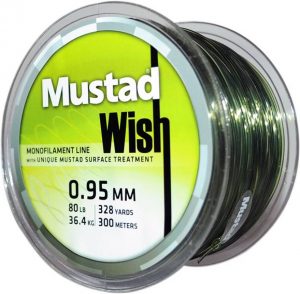When it comes to most factors, a successful fishing trip depends more on the knowledge and background of the angler involved than on any one or two pieces of equipment or their relative costs. There is an exception, though, and this comes in using monofilament line for salmon fishing.
 Simply put, monofilament line is very difficult to guarantee success with when it comes to fishing for salmon, especially in a salt water environment.
Simply put, monofilament line is very difficult to guarantee success with when it comes to fishing for salmon, especially in a salt water environment.
This rule does not always hold true in a fresh water environment; the running water of rivers and streams combined with the aggravated state most of the salmon are in mean that monofilament line does not stand out as much because of natural camouflage.
Fishing the ocean with monofilament line, however, is another story. The line reflects sunlight very well, a dead giveaway if you are using it as a leader for catching salmon. It is best not to use monofilament as leader material.
When it comes to your main line, monofilament still has several disadvantages on the ocean, the main one being that it is susceptible to corrosion. Again, this knock against mono line does not carry over to freshwater salmon fishing, although when it comes to rivers and streams the less durable qualities of monofilament line may make the difference in a trip when it rubs up against rocks or other obstacles.
Dismissing monofilament line for salmon fishing as leader material does not mean it is not without its applications when you are out after salmon. It can make good line, but it is also fairly high maintenance. Monofilament is notorious for the amount of memory it retains, and in order to have a day wherein the risk of birds nests are minimal it is necessary to unkink the line on your way out.
This is a simple, though arduous, task. Just unwind the line from the reel as you are heading out and let the natural motion of the water and boat straighten it out for you.
Despite its continued shortcomings, monofilament line has come a long way from its origins, when it was stiff and virtually impossible to use. The flaws still associated with this type of line are much fewer than they were just a decade ago, and advancements continue that may one day see monofilament on par with more expensive lines. Copolymer models, for example, allow monos to lose a lot of their memory, stretch, and allow them to be more resistant to abrasion.
The real reason to spring for monofilament line for salmon fishing is the price. This type of line is easy to produce (it is a by-product of crude oil) and is therefore much cheaper than other types of line. For saltwater salmon fishing, however, it is not recommended, and even freshwater anglers may want to think about investing in some more expensive and reliable line such as flurocarbon line for salmon fishing.
Wikipedia’s information on monofilament fishing line here.

